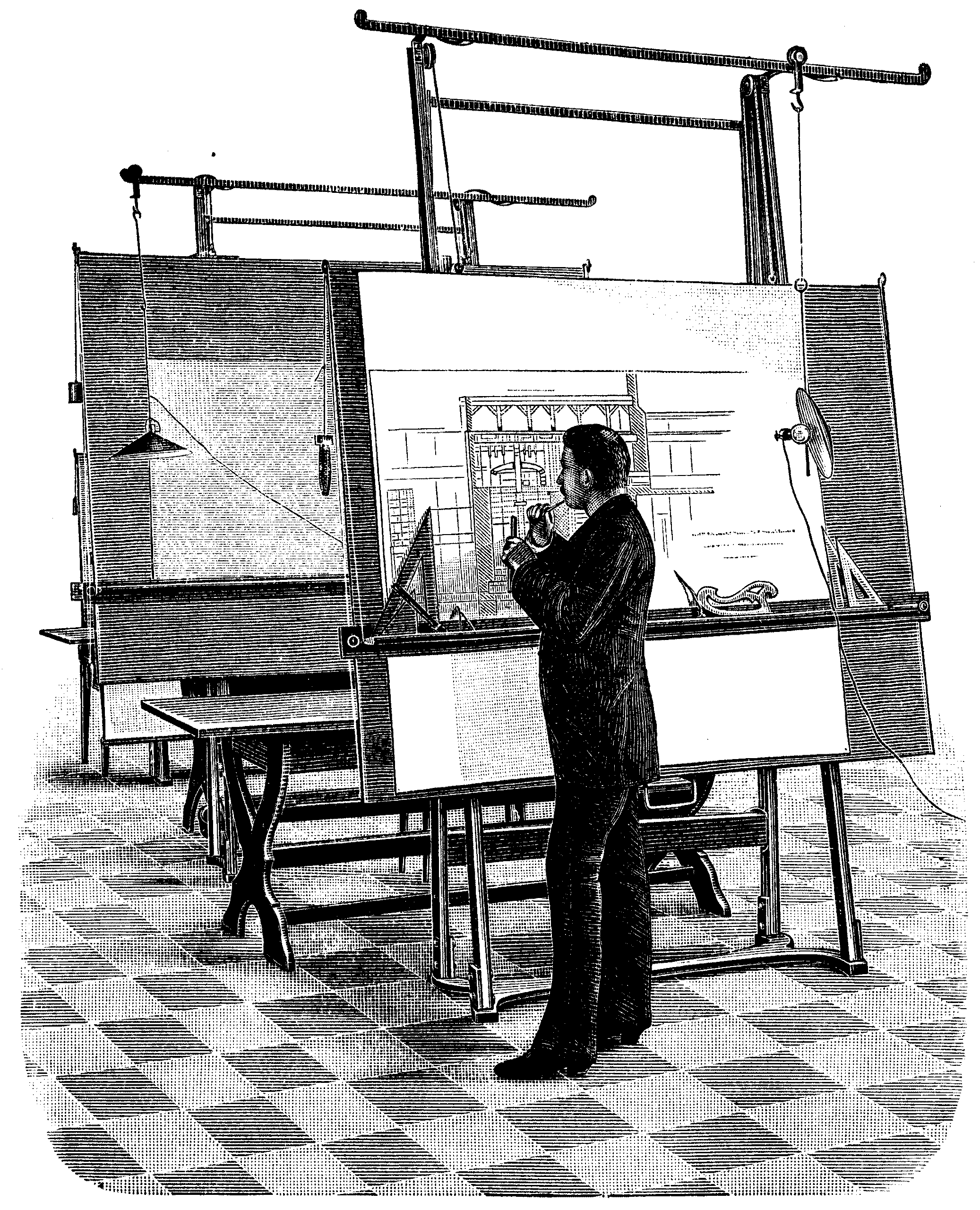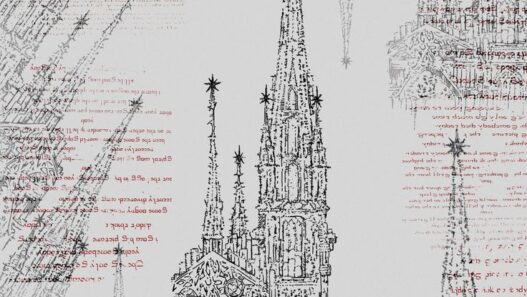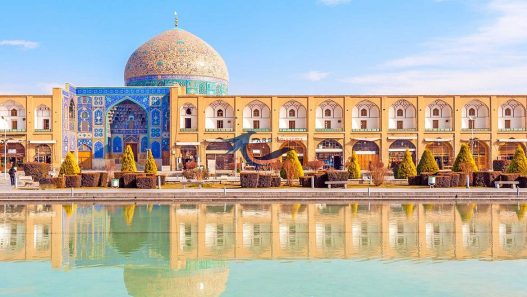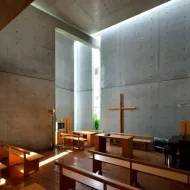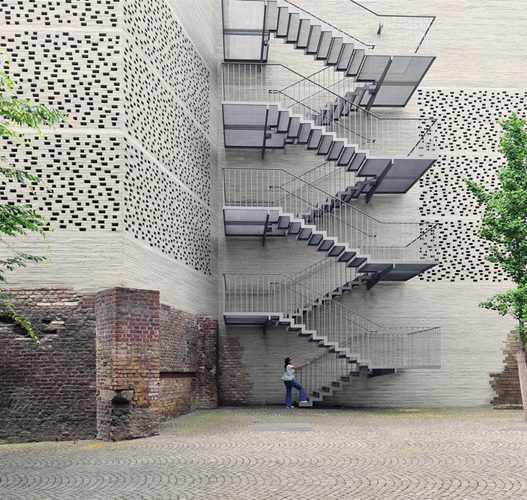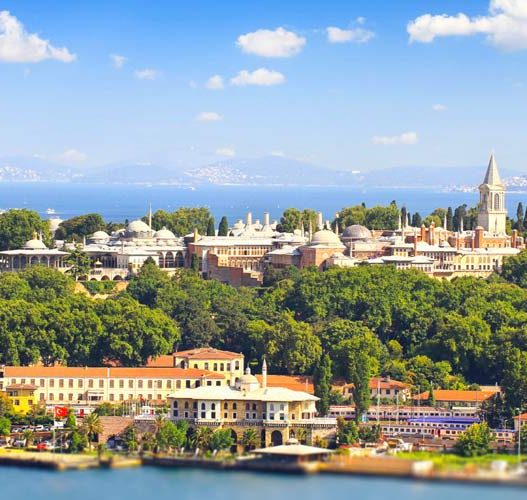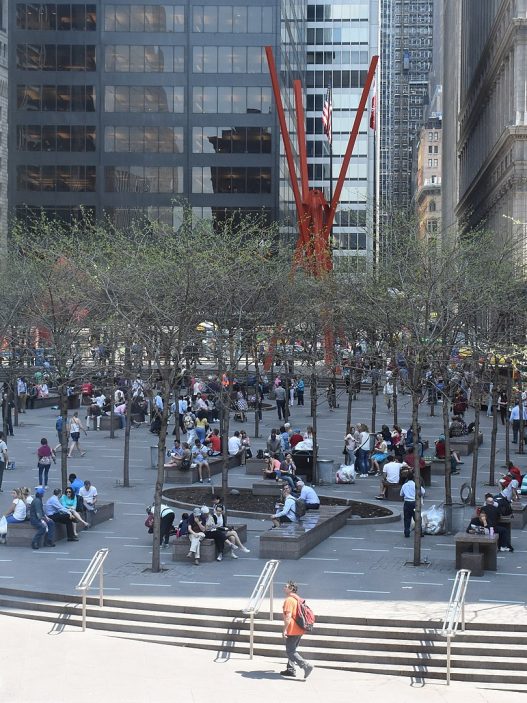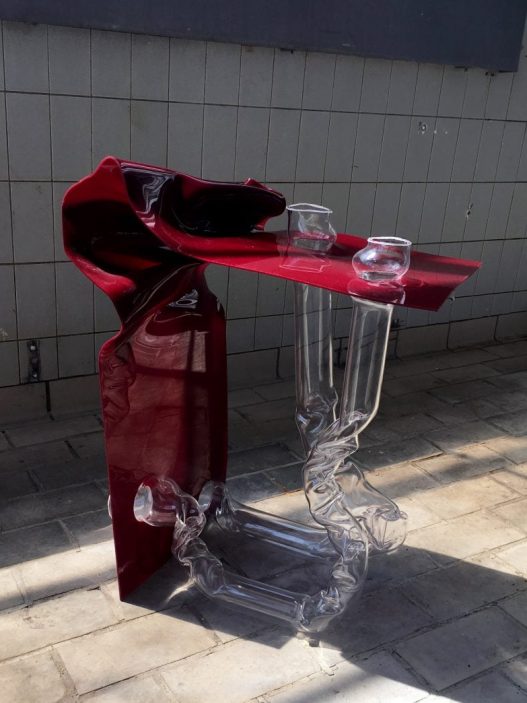
Aerial view of Mecca (Makkah) with the Masjid al-Haram (Grand Mosque) visible in the center. All mosques around the world form a qibla axis that transcends geography by directing their prayer halls toward this sacred place.
1. From Revelation to Geometry: How Does the Qibla Become a Spatial System?
Principle of Orientation Toward the Qibla: In every mosque, the qibla – the direction of the Kaaba in Mecca – is the invisible axis around which the physical space is arranged. Early Islamic sources record the dramatic moment in 623 CE when Muhammad, while praying in Medina, received a revelation that he must turn from Jerusalem toward Mecca. This event made turning toward the Kaaba a requirement for ritual prayer (salah). Thus, unlike churches or temples that can be oriented by the sun or for symbolic reasons, a mosque’s “identity” is defined primarily by an abstract orientation rather than by form or decoration. All the arrangement within the mosque serves to reinforce this focal point of orientation. The wall facing Mecca (qibla wall) usually has a mihrab (niche or recess) in the center to indicate the direction of prayer. The imam, who is responsible for leading the prayer, stands in front of or immediately next to the mihrab and aligns the congregation behind him in neat rows. Next to the mihrab is a stepped pulpit called the minbar, where the Friday sermon is delivered. These elements form an intense sacred axis extending into the interior spaces of the mosque.
Spatial Sequence and Hierarchy: Architecturally, we can represent a sequence schematically: mihrab → minbar → prayer hall → courtyard → entrance – each layer is aligned with the qibla direction. For example, in classical hypostyle mosques such as the Great Mosque of Cordoba, the prayer hall is like a forest of columns arranged so that each corridor faces the qibla wall. Cordoba’s famous multi-arched mihrab section was added in the 10th century by Al-Hakam II, creating a visual climax on this wall with magnificent mosaics and layered arches drawing attention to the qibla niche. Such hypostyle designs emphasize width – the entire long wall is qibla, allowing worshippers to stand in parallel corridors. In contrast, later domed mosques (e.g., Ottoman or Mughal style) use large central domes and half-domes to focus axially on the mihrab. Mosques by the master Ottoman architect Sinan, such as Süleymaniye (1557), are essentially large domed cubes oriented towards Mecca, with the center of the dome and the mihrab on the same axis. The dome eliminates the forest of columns, providing an unobstructed view of the mihrab and better acoustic and visual connection between the imam and the congregation. The windows in the drum of the dome also spread the light forward, delicately highlighting the qibla side. Thus, whether it is a hall with many columns or a central dome, the internal geometry is oriented towards Mecca.
Site and Alignment Negotiations: The requirement for qibla orientation often means that a mosque deviates from the street grid or plot geometry, leading to interesting design adaptations. In many historic and contemporary cities, the “secular grid” of streets is not aligned with Mecca, so a new mosque site sits at an angle. For example, the New York Islamic Cultural Center (1989), Manhattan’s first purpose-built mosque, is rotated 29° from the Manhattan street grid to face Mecca. This can lead to wedge-shaped gaps remaining on the plot or creative landscape designs to conceal the non-parallel orientation. When the mosque cannot be rotated externally (e.g., when covering an existing rectangular building), the alignment is altered internally: designers can rotate the interior prayer space or lay the carpet at an angle relative to the walls. A study of mosques in Mumbai notes that prayer rows are often “disconnected” from the plot edges and the building appears “uncomfortably crooked” on the plot, but this disconnection is considered spiritually as “an opportunity to redefine the direction of the worshippers.” Transitional elements such as slanted entrances or sloped roof overhangs can mediate between the building’s exterior and the angled prayer hall. In reconfigured spaces (e.g., a converted section of an old shop or house), one corner of the room can be designated as the qibla, and carpets can be laid at an angle accordingly, or a false wall can be added. Historical examples abound: in medieval Cairo, mosques built in densely populated areas resulted in the irregular layout of streets, as we shall see later. In Cordoba, recent research even suggests that the mosque’s peculiar orientation toward the southeast may have followed the pre-existing Roman street plan. What is important is that ritual alignment takes precedence and that architects find intelligent solutions to achieve this.

Case Studies:
Spain, the Great Mosque of Córdoba: One of the most beautiful examples of a hypostyle plan (columned hall) with a richly decorated qibla wall. Notably, Córdoba’s qibla direction is not the “correct” great circle line to Mecca as we calculate it today; it is more southerly (approximately 150° clockwise from north) – probably “parallel to the axis of the Kaaba” or following local tradition. Through successive expansions (8th-10th centuries), the prayer hall was further extended towards the qibla side, continuing in this direction each time. Al-Hakam II’s mihrab (965 CE) is a masterpiece of geometry and mosaics that became the visual focal point of the entire complex. Its distinctive horseshoe arch, framed by gilded line panels, uniquely highlights the sacred direction. The courtyard (Patio de los Naranjos) is located behind the hall and provides a transition area where worshippers can align themselves before entering the prayer area. Thus, Córdoba demonstrates how an abstract direction is given monumental form; everything from the placement of the columns to the decorative hierarchy is organized according to alignment.

Jama Masjid, Delhi, India: One of India’s largest mosques, Jama Masjid (built in the 1650s), has a courtyard-centered plan oriented toward the qibla. In front of the prayer hall is a large stage (courtyard), and at the far end, perfectly symmetrical to the Mecca axis, rises the qibla facade with its three domes and central pishtaq (arched entrance). Worshippers entering from the opposite side are gently guided towards the mihrab by black and white marble strips on the floor. The entire complex, including its monumental staircases and doors, directs one’s movement “towards the mihrab”. This alignment was so important that in the congregation mosque of Fatehpur Sikri (16th century), architects tilted the mosque’s position within the palace-city to ensure correct orientation, even though other buildings were at odd angles. These Indian examples show how courtyards, passageways, and even market entrances were arranged to direct the eye and body towards the qibla.

Ottoman Imperial Mosques (e.g., Süleymaniye, Istanbul): Here, a large axial symmetry is observed around the qibla line. The Süleymaniye complex includes not only the mosque, but also hospitals, schools, baths, etc., and all of these are arranged according to the direction of the mosque. The mosque itself has a strong central axis: one enters from the courtyard, passes under the main dome, and reaches the mihrab, which is emphasized by a half-dome and large windows. The domes and half-domes in structures such as the Sultanahmet Mosque (1616) are “stacked like monuments” and also serve to frame the qibla – the largest dome protrudes towards the mihrab, while the half-domes descend gradually towards the entrance, directing the gaze forward. Every element, from the placement of the enormous calligraphic medallions to the position of the Sultan’s balcony, reinforces this forward orientation. The result is a spatial experience that is almost ceremonial, focused on the act of looking towards Mecca.
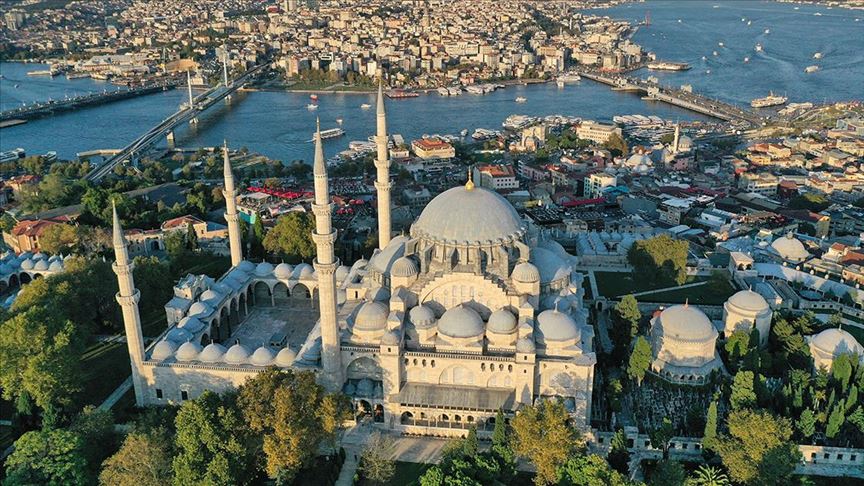
Mosques of the Diaspora in Latin America and Spain: In regions such as Latin America, specially constructed mosques are relatively few, and many communities reuse existing buildings. The Centro Cultural Islámico “Custodio de las Dos Sagradas Mezquitas, Rey Fahd” in Buenos Aires (completed in 2000) is one of the largest mosques in the Western Hemisphere. Built on a large site, the mosque could be oriented towards Mecca, thus creating a slightly rotated footprint in the Palermo neighborhood. Its design combines Argentine materials with Islamic forms: the dome and minaret point towards the qibla, as in old mosques in historic Muslim cities, marking Buenos Aires’ skyline. In Spain, new mosques serving Spanish-speaking Muslim communities often face the challenges posed by dense urban fabric. For example, the Madrid Central Mosque in the Tetuán neighborhood had to fit into a city block. Architects solved this problem by creating a cylindrical minaret and designing the interior prayer hall at an angle. Visitors notice that the prayer rugs are laid at an angle relative to the building’s walls. This is a practical solution seen in many diaspora mosques. The simplest way to determine the qibla in a rectangular room is to use an inclined carpet or partition. This creates an interesting layered geometry: a grid for the building and a “sacred grid” superimposed on it for the prayer rows. These examples emphasize that, regardless of location, the transfer of doctrine (“turn toward the Sacred Mosque in prayer”) to the built environment is indisputable, even if it involves a complex interplay of forms and directions.
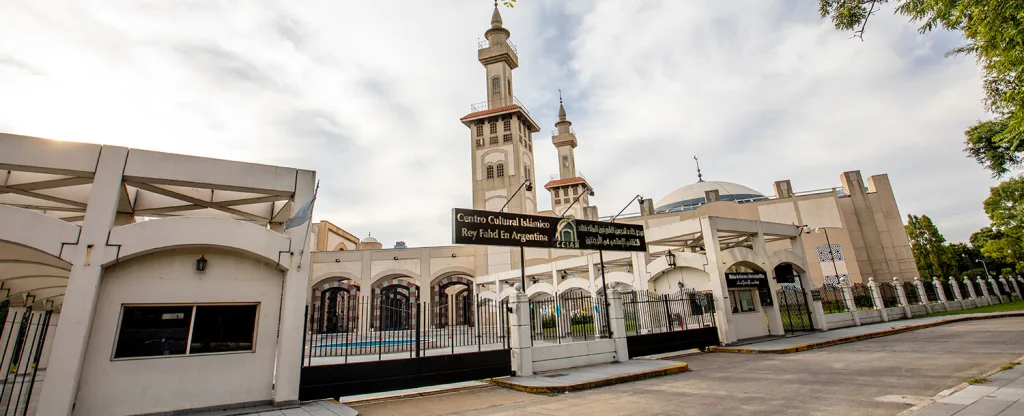
2. One Direction, Multiple Climates: How Do Environmental Logics Compromise with the Fixed Sacred Axis?
Climate and Orientation Challenges: The qibla requires the mosque’s main wall and long axis to face a single azimuth, but this fixed orientation encounters vastly different climatic conditions from Córdoba to Delhi and Jakarta. Architects must skillfully harmonize the “fixed sacred axis” with local solar movements, prevailing winds, and acoustic properties. A design that is ideal in one climate may cause discomfort when rigidly applied along the qibla line in another climate. Important environmental factors include sunlight and glare on the qibla wall, the ventilation pattern in the prayer hall, and the propagation of the imam’s voice.
Sunlight on the qibla: Sunlight is generally welcome in mosques, but sunlight shining directly on the mihrab wall can dazzle worshippers facing it. Since the qibla direction is rarely true north or south, at certain times of the year the sun can hit the qibla wall through side windows or the entrance behind the congregation. In hot climates, this can cause the wall to heat up and cause glare. Traditional designs have generally mitigated this problem: for example, hypostyle halls (such as in Cordoba) have deep columns and a limited number of high windows, creating a relatively dim interior where the mihrab is illuminated softly rather than by direct rays. In Cordoba, daylight enters indirectly—a “dim light surrounds us” in the forest of columns—preventing harsh glare from reaching the richly decorated qibla niche. The arches in the courtyard also act as buffers, filtering the low afternoon sun from the west before it reaches the prayer hall. Conversely, modern architects sometimes highlight daylight on the qibla wall as a spiritual feature. A striking example of this is the Sancaklar Mosque in Istanbul (2012, Emre Arolat): partially built on a hill, this mosque’s underground prayer hall is equipped with slits and cracks along the qibla wall that allow **daylight to “filter into the prayer hall”. This creates an ever-changing play of light that emphasizes the orientation of the space. Here, the design transforms a potential problem (light entering from the front) into an element that poetically highlights the qibla—at certain times, the sun’s rays fall precisely on the place where worshippers focus, subtly reminding them of divine light. In very bright climates (e.g., the Gulf or Sahara), designers can avoid windows on the qibla wall entirely and instead allow diffused light to enter through clerestories or perforated screens (mashrabiyya) on the side walls. Taj-ul-Masajid in Bhopal (one of India’s largest mosques) has a deep, arched recess for the mihrab and a wide veranda, so that direct sunlight never hits the imam’s face; daylight reflects off the courtyard’s marble floor, gently illuminating the interior of the qibla. Simulation studies conducted in hot climates (Riyadh, Saudi Arabia) show that the roof actually gains more solar energy than the walls, but that glare control on the qibla side is very important for visual comfort. Solutions include external brise-soleil, enclosed porticos in front of the qibla wall, or orienting the qibla to face astronomical south (if this is approximately the same as the direction of Mecca), because in many latitudes, south-facing walls receive high sun but no direct glare from the east/west. Thus, the fixed axis remains unchanged, but the shape of the building (arches, screens, courtyards) is modified to control the sun.
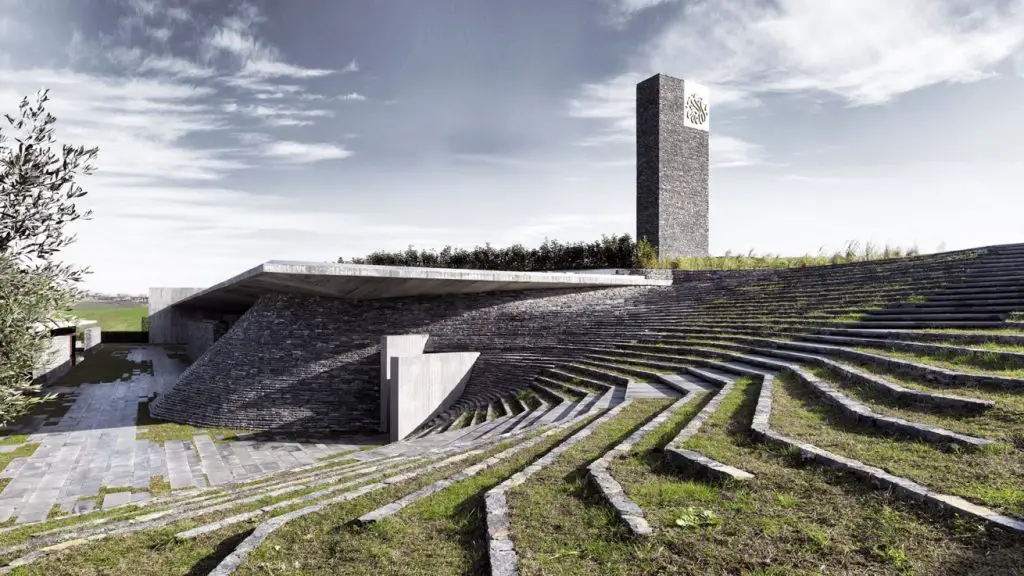

Thermal Comfort and Ventilation: Orientation can affect how a building captures breezes or avoids hot winds. Traditional mosques in hot regions often use courtyards, wind towers, and high ceilings to provide airflow, regardless of the qibla direction. However, if the qibla wall faces the prevailing wind, a natural cool airflow can be provided in front of the mosque; otherwise, architects create side openings. For example, on the North African coast, where cool sea breezes can blow from the north, a mosque facing east (towards Mecca) requires side shuttered windows or courtyards to direct this breeze into the prayer hall. Wind tower technology has even been adapted: research conducted in humid Dhaka (Bangladesh) shows that tall minarets can also be used as ventilation chimneys and can draw hot air upward and outward by utilizing the stack effect. A 20-meter-high minaret with a shaft inside has been calculated to generate an airflow of ~1.3 m³/s. This minaret functions like a solar chimney to ventilate the prayer hall. Such measures also align with historical anecdotes about some Ottoman minarets being hollow and used for air circulation. In modern designs, cooling is usually provided by HVAC systems, but passive design is regaining popularity in sustainable mosque initiatives. The award-winning Cambridge Central Mosque (UK, 2019) uses wooden “trees” (columns) that support the roof and also conceal channels for natural displacement ventilation; the qibla direction was not aligned with prevailing winds, so the architects added wind catchers to the roof to ensure cross ventilation regardless of the axis. On the other hand, in climates with cold winters, such as Turkey or Iran, a fixed qibla direction means it is not possible to orient the building towards the most suitable sun direction for warmth. Ottoman mosques solved this problem by adding side corridors to create a smaller, more easily heated worship area in winter, using heavy walls (thermal mass) to balance temperature fluctuations. While the direction of the mosque is sacred, local solutions (courtyards for hot and dry climates, high ventilation for humid regions, smaller enclosed winter halls in cold areas) “layer by layer” cover the rigid axis.
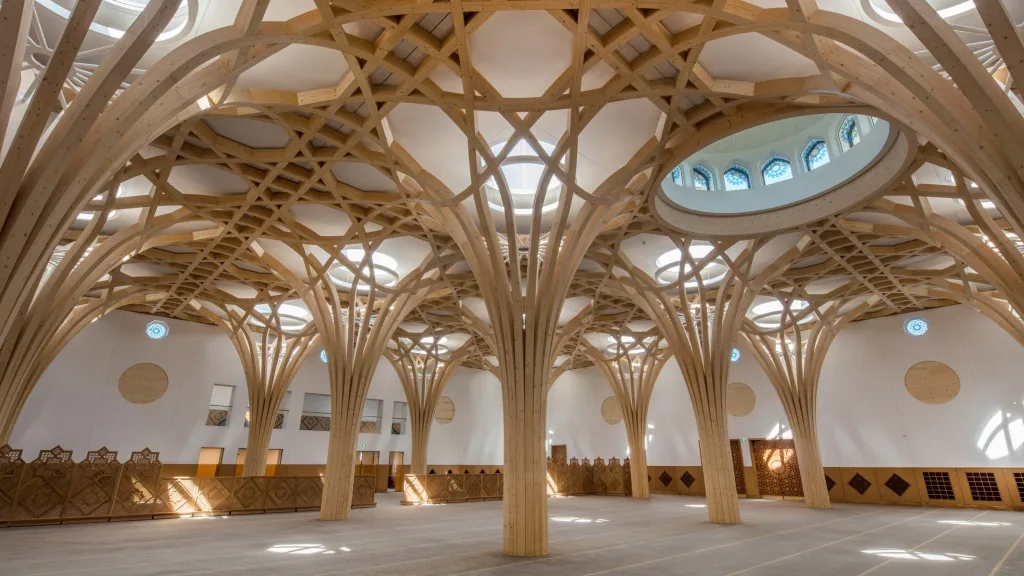
Acoustics – Sound Direction: The direction of prayer also determines the direction in which the imam’s voice should be projected. In periods when electronic amplification was not used, architects paid special attention to mosque acoustics so that the verses and sermons could reach the congregation sitting in the back rows. Geometric design (domes and flat roofs) plays an important role here. The Ottoman central sound dome was partly an acoustic device: in Istanbul’s great mosques, such as Süleymaniye and Selimiye, Sinan placed hidden resonance pots and boxes inside the domes and walls to prevent echoes and increase clarity. The dome functions like an umbrella that reflects sound outward. Süleymaniye is an “iconic structure for its acoustic superiority”; here, sound reflections beneath the dome ensure the imam’s voice reaches every corner without the need for modern technology. In contrast, a hypostyle hall with numerous columns (e.g., Cordoba or Kairouan) exhibits greater acoustic attenuation; the forest of columns breaks up the sound but also creates “acoustic shadows.” In such mosques, the imam usually stands on a slightly elevated minbar and requires multiple attendants to repeat or “relay” his sermon to larger congregations. Modern analyses show that despite Sinan’s optimizations, these domed stone mosques have long reverberation times (~4-5 seconds when empty). This is ideal for melodic and long recitations, but can cause speech sermons to sound muffled. However, the shape and materials were adjusted so that the frequencies of the human voice would remain intelligible. Today, architects use computer modeling for acoustics: RT60 (reverberation time) charts, when comparing a domed mosque with a flat-roofed mosque, reveal that the dome intensifies and prolongs the sound, while a flat roof with absorbent surfaces (carpets, curtains) provides a more subdued acoustics. In both cases, the imam’s voice from the mihrab area must be clear. In some modern mosques, thin megaphone-like niches or reflective panels surround the mihrab to direct the sound. A fixed qibla does not interfere with acoustics, but it does determine the location of the sound source (always at the front). Thus, architects can design ceiling profiles that spread the sound from front to back. For example, many Mughal mosques feature a concave mihrab niche that acts as a parabolic reflector for sound in the hall. Computational fluid dynamics (CFD) simulations have even been performed for sound: just as air must flow, sound must also evenly cover the space.
Case Studies:
Sancaklar Mosque, Istanbul: As mentioned earlier, its design is exemplary in terms of its use of light. Istanbul’s latitude (~41°N) means that the sun’s path changes significantly with the seasons. The prayer hall of Sancaklar Mosque is located underground, and its qibla wall faces a sunken garden to the west. Narrow slits in the concrete wall create an almost cave-like feeling. As the sun moves, “the only decoration is the sunlight filtering through the qibla wall”, and it changes according to the time of day. This not only provides sufficient light during the day without fixed lighting, but also indicates the passage of time during prayer – a dynamic connection between cosmology and ritual. In terms of temperature, being covered with earth protects it from Istanbul’s hot summers and cold winters. Ventilation is provided by cool air from the garden entering low and exiting through a gap along the roof plane along with warm air. Despite its fixed orientation, the building’s section (stepped towards the ground) uses the topography of the terrain for microclimate control.



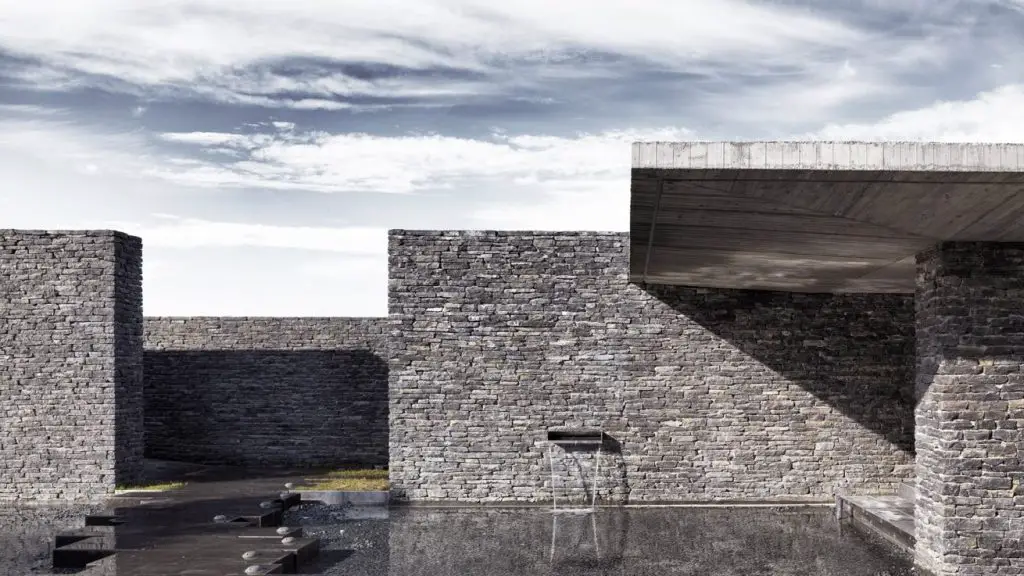
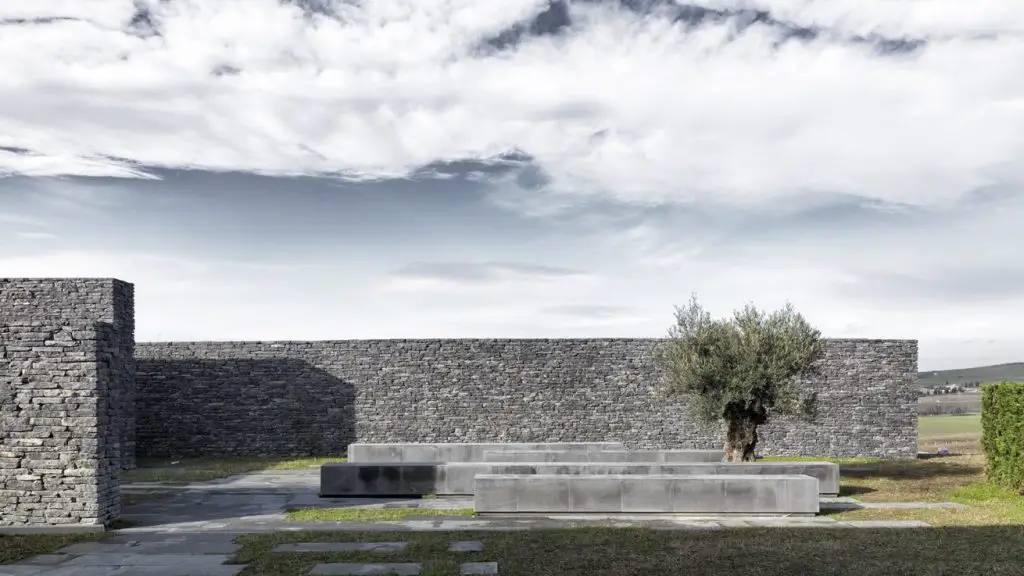
Córdoba Great Mosque: Environmental logic in a historical hypostyle: Córdoba can be very hot in summer. The mosque’s design solves this problem by using a courtyard (still present) surrounded by orange trees that humidify and cool the air, and a double-layered arch that increases the ceiling height (pushing hot air upwards). Numerous columns and arches create a shaded light effect inside – direct sunlight is largely limited to specific points. Thick stone walls on the qibla side keep the interior cool. Interestingly, since Córdoba’s qibla direction (generally) faces south, the mihrab does not receive direct sunlight from the east or west; the high windows on the north wall of the courtyard provide most of the illumination, meaning that “the north end of the mosque is the main source of light”. This makes the mihrab area relatively darker and more mystical – not ideal for reading text, but suitable for contemplation. In winter, the low sun from the south does not penetrate deeply into the interior due to the forest of columns and the mosque’s own depth, so the interior remains quite cool throughout the year and warm clothing is required in the cold months, but this also helps preserve the structure.
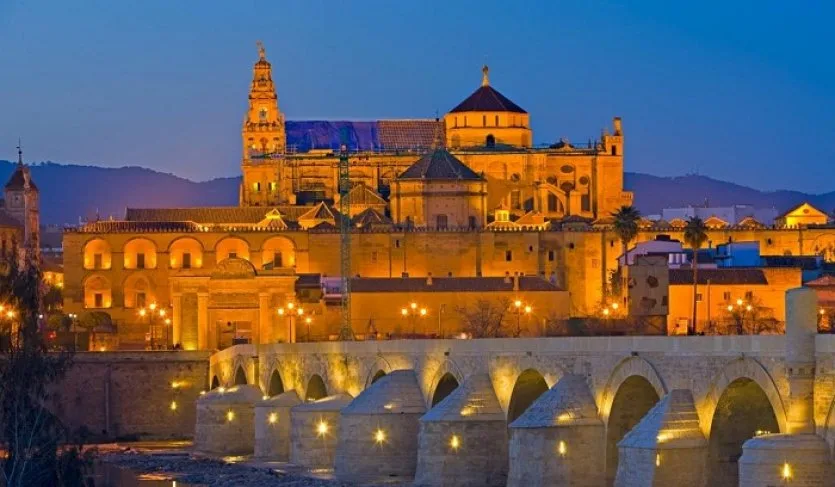
Performance Simulations: Modern research confirms these observations. Daylight simulations (using climate-based metrics such as Daylight Factor or Useful Daylight Illuminance) can map how much light the qibla wall receives throughout the year. For example, a study conducted on a hypothetical mosque in Cairo found that adding a deep portico on the qibla side significantly reduced high-angle sunlight on the mihrab wall during summer, while still allowing diffused light to enter. This is an environmental arrangement fully compatible with the sacred axis. CFD studies on airflow show that if cross-ventilation openings are placed on the side walls (north/south if the qibla is east, etc.), good airflow can be achieved in the prayer hall even if the front and rear sections are largely closed for security or noise control. Acoustic measurements (impulse responses) taken in actual mosques show that large domed mosques today generally require electronic sound systems for speech, but older designs are sufficient for melodic call to prayer or recitation of hymns. In new mosques, designers sometimes place sound-absorbing panels on the rear or upper walls to reduce reverberation – again, a subtle intervention that does not affect directionality but mitigates its effects (a long, narrow hall facing the qibla would otherwise cause flutter echoes).
The sacred axis “points in one direction everywhere,” but local climate design wraps around this axis: sunlight is controlled by curtains and courtyards, wind is captured by towers and side openings, sound is fed by domes and materials. These environmental interventions, far from conflicting with orientation, generally enrich the spiritual experience – filtered light creates atmosphere, natural ventilation increases comfort during prayer, and the echoing space amplifies the imam’s voice; all of this serves worship directed towards Mecca.
3. Tools, Mathematics, and Meaning: To What Degree Do Buildings Pursue Qibla Accuracy – and Why?
Sacred Geometry and Practical Tolerance: Determining the exact direction of Mecca from any location is a geometrically complex problem, and Muslim scholars have attempted to solve this problem over the centuries using increasingly sophisticated methods. In practice, however, mosques have exhibited a surprising variety of orientations, reflecting a balance between mathematical precision and cultural or practical tolerance. The question “How precise is precise enough?” has received different answers in different periods. Some communities insist on aligning their mosques as precisely as possible with the Kaaba (ayn al-ka’ba – “directly opposite” the Kaaba), while others are content to face a broad area (jihat al-ka’ba) in the general direction of Mecca. This acceptable error or “ritual tolerance” is as much a cultural artifact as it is a technical issue. Buildings thus encode different levels of precision according to available knowledge, tools, and theological interpretations.
Historical Methods and Tools: Early Muslims determined the qibla using simple methods – for example, observing the rising/setting direction of certain stars or using local knowledge about which direction Medina or other communities faced. Prophet Muhammad’s qibla in Medina was roughly south (since Mecca is located south of Medina). As Islam spread, particularly to the east and west, these primitive methods led to significant deviations. In the 9th and 10th centuries, mathematicians and astronomers in the Muslim world developed spherical trigonometry to calculate the direction of the great circle to Mecca. They produced qibla tables and astronomical instruments. For example, medieval scholars such as al-Khwarizmi and al-Battani prepared tables of qibla angles for major cities. When the astrolabe and specialized qibla compasses (called qibla-numa or qibla indicators) were invented, more precise on-site determinations became possible. For example, a 1738 Ottoman-era brass qibla compass contains a list of cities and the angle at which to turn from north. However, even these depended on the accuracy of the available data (the latitudes/longitudes of cities) before modern latitude determination methods were developed. Historian David King notes that accurate geographic coordinates did not exist before the 18th century, so despite the existence of formulas, many mosques were still oriented based on rules and experience or simpler local methods. As a result, “historical mosques with different kibas still stand today in the Islamic world.” Most of these differences were not seen as problems; on the contrary, they were accepted according to the principle that those who did their best to face Mecca were accepted.
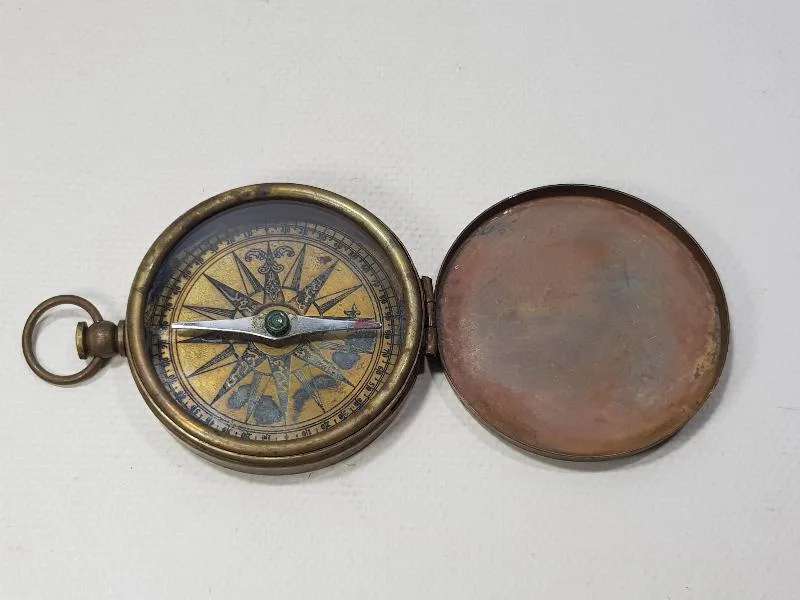
Acceptable Deviation – A Cultural Perspective: Islamic law generally accepts that it is sufficient for those who cannot precisely determine the qibla to turn in its general direction (within a quarter circle). Classical jurists such as Abu Hanifa (8th century) allowed significant flexibility for distant locations. In fact, historical practices show that there were regions that standardized an approximate qibla that was quite deviated according to later modern calculations. A vivid example: In Al-Andalus (medieval Spain), most mosques (including Cordoba) faced distinctly south of the true Great Circle direction. A 12th-century Andalusian source recorded numerous qibla values used in Córdoba: 150° (the direction of the Great Mosque), 135° (midway between east and south), 113° (a calculated value close to the modern true qibla), and even true south (180°). Scholars interpret this as evidence that different methods (astronomical, traditional, and symbolic) coexisted. What matters is that all these directions were considered valid – they corresponded to the compass’s “southeast quadrant,” and Andalusian jurists deemed this acceptable for facing the Kaaba. This quadrant approach is also mentioned by Al-Qurtubi and others: since the Quran says “turn your faces toward Masjid al-Haram,” it was sufficient to look toward the general direction of the Kaaba, not its exact cube. Similarly, in Central Asia, the entire southwest quadrant was permitted. This leniency ensured that communities did not feel compelled to rebuild their mosques or change their orientation even when new information emerged. It was understood that God did not impose geometric precision on believers beyond reasonable limits.
However, there were also moments of reckoning. As empirical science developed, some communities chose to change their direction. A famous example occurred in 19th-century Java (Indonesia): Local mosques faced west (because in the public perception, “Mecca = west”), but Ahmad Dahlan, an educated cleric, realized that the true qibla was north of west. In 1894, he reoriented his prayer hall and tried to convince others; traditionalists resisted fiercely – one of the new mosques was even demolished by opponents. Over time, however, his view prevailed, and major mosques like Yogyakarta were eventually realigned to the calculated directions. This incident demonstrates how recalculation can become a social debate: it is not just about mathematics, but also about trust in authority and attachment to existing sacred spaces. More recently, a debate arose in North America: the first mosques in the US and Canada (1970s and earlier) mostly faced east or southeast because that was the direction Mecca appeared to be on flat maps. However, in the late 1970s, Muslim scientists such as Dr. Kamal Abdali argued that the shortest route from, for example, New York or Washington DC was northeast (the great circle route passing over the pole). This sparked a heated debate – some imams thought the great circle direction looked wrong (meaning facing northeast, which felt like facing Europe rather than the east of the “Old World”). In 1993, two academics even published a book arguing that the traditional southeast direction was correct for religious reasons. Ultimately, mathematical logic prevailed in most communities: “Most Muslims in North America accepted the north/northeast qibla, while a minority followed the east/southeast direction.” Many mosques quietly rearranged their prayer halls; in some cases, they rotated the carpets 90° overnight! The Washington Islamic Center (built in 1953) was actually ahead of its time: it was one of the first mosques oriented northeast by an Egyptian architect; people were initially surprised, but it turned out to be correct (56° northeast). This shows how increased precision (thanks to better calculations) eventually changed architecture, but that this did not happen without social negotiations.
On-Site Qibla Measurement: An interesting research study involves measuring the actual orientation of existing mosques in the field and comparing it with the true qibla azimuth. This study has been conducted in Morocco and Turkey. Geographer Michael Bonine’s research on urban mosques in Morocco revealed that only modern (17th century and later) mosques are close to true east (~91–97° north for Morocco), while older mosques cluster around two different angles: approximately 155–160° (south-southeast) and 120–130° (east-southeast). These correspond to historical traditions or errors – for example, 155° may reflect “true south,” like the Prophet’s qibla direction, while ~120° may have been aligned with the winter sunrise or some other rule. In Tunisia, since the Great Mosque of Kairouan (670 CE) was oriented at this angle and served as a model for later mosques, it has been proven that most historical mosques face ~147° (south-southeast). The actual modern qibla there is ~110–115° (southeast-east). Nevertheless, for generations, new mosques were built parallel to the venerable old ones, and this deviation continued. This is a fascinating example of cultural inertia overcoming new mathematics. In contrast, there was relatively better alignment in Ottoman Turkey in the 16th century. This was probably due to the astronomers (muwaqqits) employed by the state and imperial standardization. However, even in Ottoman mosques, small errors are visible; a study of mosques in Anatolia found that older mosques showed more deviation, while 19th and 20th-century mosques were almost perfectly accurate, with accuracy increasing over time. Furthermore, it has been noted that the Ottomans sometimes used magnetic compasses without understanding magnetic declination changes, and that this situation led to consistent slight deviations that could even indicate approximate construction dates due to the angle of error (caused by the shift of the Earth’s magnetic north).
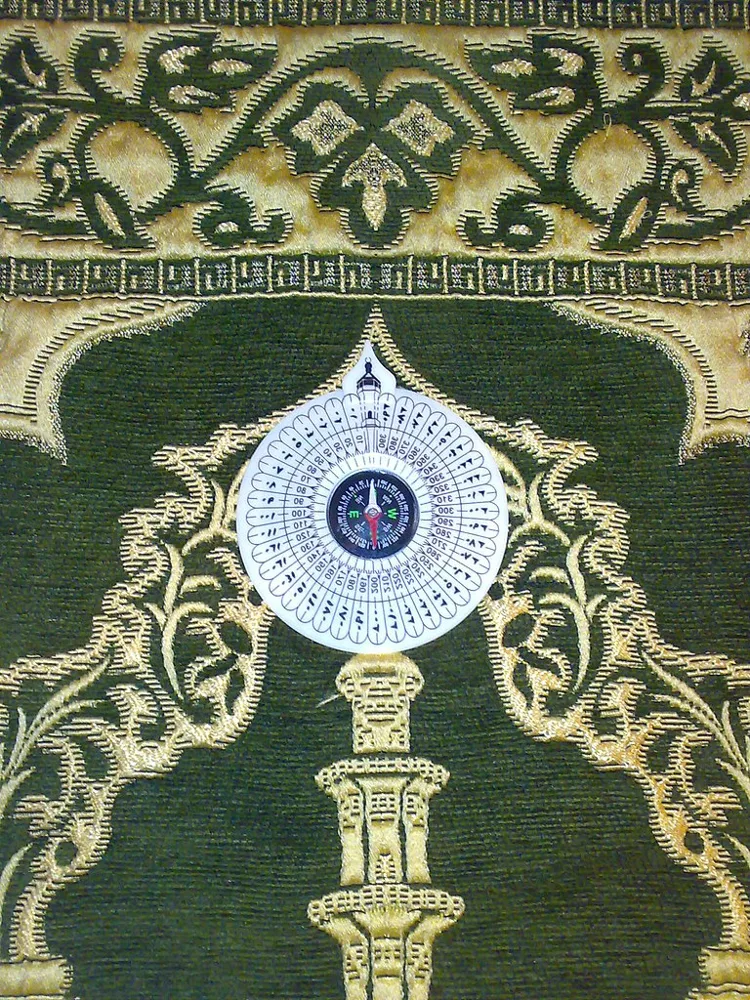
A portable qibla compass placed on a prayer rug. Known since the 13th century, these devices help Muslims find the correct direction of Mecca. Major cities and qibla angles are usually written on the dial.
Symbolic Alignments and Mathematical Alignments: Sometimes things that appear to be “errors” may have a symbolic logic. Scientists suggest that Córdoba’s 150° orientation was chosen to align with the winter solstice or to be approximately parallel to the walls of the Kaaba (the Kaaba’s own minor axis is approximately 154°). Therefore, Córdoba may have been deliberately oriented in this way to mimic the direction of the Kaaba, thus creating a “parallel” spiritual connection to the source. In other cases, the direction was determined by folklore or convenience: some mosques in China’s Central Asian region face west because the local people assumed Mecca was directly west; in reality, Mecca is approximately southwest when viewed from Xian, but this difference was not very noticeable before modern times. Here, the concept of cultural direction (e.g., “west is the sacred direction”) has overshadowed precision. Another layer is urban alignment: sometimes a mosque may be oriented according to the city plan or the royal palace for a complementary design, which slightly distorts the ideal qibla. The Great Mosque of Damascus (Umayyad Mosque) faces almost exactly south, which is quite close to the direction of Mecca from Damascus, but it is also aligned with the Roman street plan of the old city – probably a deliberate double optimization. These choices reflect a pragmatic approach: as long as the qibla was within acceptable limits, other factors could also be taken into account.
Modern Technology – Aiming for Accuracy: Today, GPS and applications make it possible to determine the direction of the qibla down to the degree. Most new mosques use measuring equipment for orientation during construction. However, interestingly, construction practices create a margin of error – a mosque’s walls may deviate by a few degrees from the design due to construction tolerances, and even the carpets may be laid slightly crooked. A one-degree deviation over thousands of kilometers corresponds to tens of kilometers at the Kaaba, but a 5° error is almost imperceptible on site. In fact, one analysis states that “an error of up to five degrees can easily occur during the construction of a mosque… and another five degrees can be added during the placement of the prayer rugs”. This means that even in a mosque that should be precisely measured, there could be a total deviation of ~10°. Since 10° at the Kaaba equates to hundreds of kilometers, no one is literally “laser-aligning” to the black stone of the Kaaba. Worshippers themselves also show a natural deviation—they are focused on praying, not trying to align their bodies perfectly like measuring instruments. All of this underscores the view of Islamic jurists that not perfection, but sincere effort (ijtihad) is required. This view has even been extended to extraordinary scenarios: when a Malaysian astronaut went to the International Space Station in 2007, a fatwa council said the direction of the qibla should be “as close as possible” and suggested a hierarchy: look toward Earth, or if the station is moving too fast, look in any direction. This flexibility in extreme situations reflects the everyday tolerance found on Earth.
Case Studies:
Ottoman Standardization: The Ottoman Empire established muvaqqit offices (timekeepers) in large mosques. These scholars precisely determined prayer times and maintained the qibla instruments. The directions of 16th-century Ottoman mosques are quite accurate; many mosques in Istanbul deviate by a few degrees from the true direction (approximately 151° from north for Istanbul). However, research by B. Barmore (1985) has revealed a systematic slight rotation in some mosques. This is likely due to the use of magnetic compasses during construction and the failure to account for declination changes. Ottoman architects sometimes referred to important mosques: for example, a mosque built in a provincial town could be aligned parallel to the nearest major imperial mosque (which they assumed to be correct). Thus, a chain of alignment could propagate any initial error or reinforce an earlier approximation as “standard.” Nevertheless, the differences were too small to cause theological concern. This indicates a trend: state-sponsored knowledge created a tighter clustering around the true qibla, whereas a wide distribution was observed in the Middle Ages.
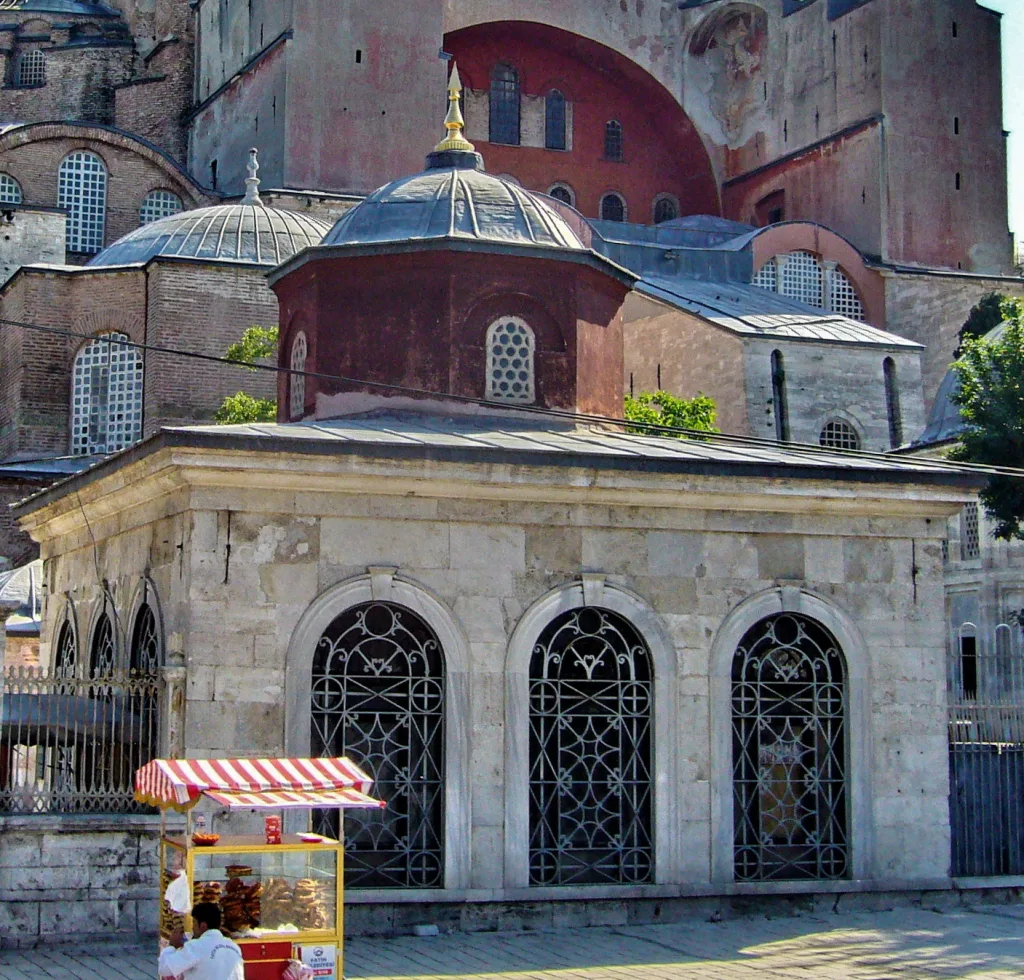
Modern Mosque Renovations: In places such as the United States, as mentioned earlier, the interiors of some old mosques have been completely transformed.
The New England Islamic Center in Quincy, Massachusetts, was originally converted from a house facing east; in the 1980s, according to Abdali’s accounts, they carefully built a new prayer hall facing northeast and even placed a brass line on the carpet to mark the true qibla. However, a minority group continued to place their prayer rugs in slightly different locations for several years, according to their beliefs (southeast). Eventually, a uniform practice emerged. This microhistory reflects the debate on the continent, but also highlights that mosques can have “layered” qiblas – one physically constructed, the other imagined by certain users. Most communities resolve this issue through compromise to avoid a real division in prayer lines.
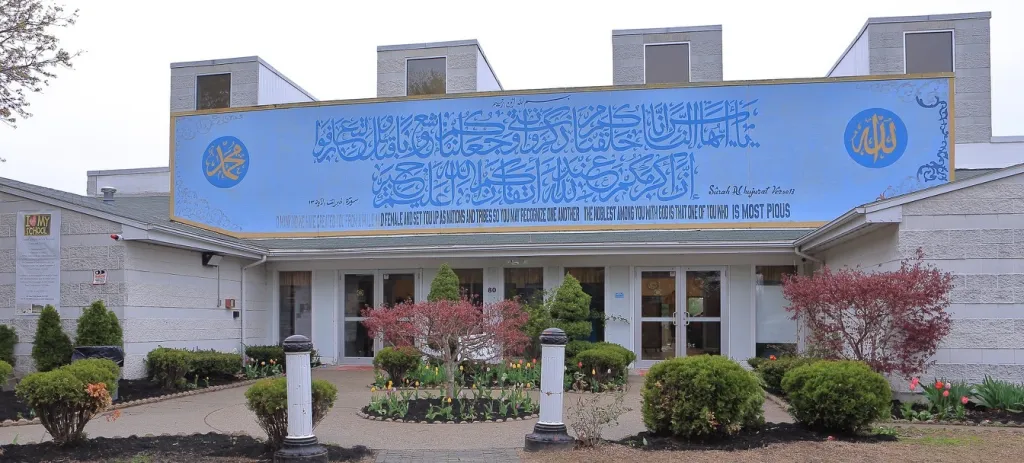
Technology in the hands of worshippers: Today, a Muslim traveler entering a hotel in Chile or China may find a sticker on the ceiling indicating the direction of the qibla. Smartphone apps instantly show the direction of the qibla using GPS, and even account for magnetic deviation if a compass is used. This means that individual worshippers can orient themselves perfectly anywhere – a level of personal precision historically unheard of. However, when a mosque is built, its direction is fixed, and the congregation generally aligns with this direction collectively. Only in cases of very serious errors can a mosque’s interior be renovated (in the 20th century, some mosques in Indonesia were renovated to rotate the mihrab wall by a few degrees). Most “errors,” unless they cause real spiritual discomfort, become part of the building’s history to be appreciated or studied rather than corrected. In fact, historians like King argue that we should not judge these alignments retrospectively as errors, but rather understand them within their context.
The orientation of mosques teaches us that precision has a human dimension. The sanctity of the qibla stems more from the unity of intention than from geometric precision. From the earliest mosques oriented according to social memory, to medieval mosques aligned with stars and mathematics, to modern mosques measured by satellite, each reflects the best methods of its time. The “acceptable error” itself has become a cultural symbol – for example, the broad southeasterly spread tolerated in Andalusia versus the later Ottomans’ pursuit of near-perfect alignment. This interplay of science, religion, and pragmatism is a rich subject, showing that faith is encoded not only in symbols but also in degrees and angles.
4. The Sacred Axis in the City: How Does the Qibla Direction Shape Urban Form and Public Life?
Mosque Orientation and Urban Morphology: A mosque is not merely a building; it is often the center of a wider area, including schools, markets, bathhouses, and cemeteries, and serves as a node in the city’s transportation network. Consequently, the qibla axis can influence the layout of neighborhoods, the orientation of streets, and the rhythm of public life in the surrounding area. In Islamic history, especially in pre-modern cities, the main mosque (Cami‘) served as a central point from which other civil structures radiated. When the orientation of the main mosque differed from the old street grid (inherited, for example, from Roman planning), it introduced a new geometry to the urban fabric, creating fascinating irregularities and focal points. Scholars suggest that rather than viewing these as inconsistencies, this juxtaposition was often intentional, done to indicate the presence of sacred order within the everyday order. Thus, the qibla “writes” the city by bending space and movement towards itself.
Complex and Campus Planning (in the Ottoman Context): In Ottoman Turkey, Ottoman mosque complexes (külliye) were meticulously planned using the mosque axis as the organizing backbone. Let’s take the example of the Süleymaniye in Istanbul: The complex includes a mosque, madrasas (schools), a hospital, a soup kitchen, baths, and the tombs of Süleyman and Hürrem, all arranged according to the qibla direction of the mosque. Despite the irregular and uneven terrain, the architects arranged terraces and auxiliary buildings parallel or perpendicular to the mosque. The complex is surrounded by a U-shaped public street, effectively shaped by the qibla rectangle of the mosque courtyard. Within this area, everything reinforces the sacred axis: for example, the tombs are located immediately behind the qibla wall, on the axis (perhaps to emphasize the desire to be buried “parallel” to Mecca). The minarets placed at the corners of the courtyard also align with the sightlines – when viewed from a distance, the minarets frame the dome located on the qibla axis and make its direction clear on the horizon. Ottoman architects reinforced this even further by determining the direction of the streets in this way: the three main roads leading to Süleymaniye were designed so that they directly face the entrance (northwest side) or the dome of the mosque. This shows how an entire neighborhood can be organized according to the location of a mosque.
Mughal and Charbagh Influence: In Mughal India, large mosques were often part of a palace or garden layout. In Shahjahanabad (Old Delhi), the Jama Masjid (1656) stands on a high plinth at one end of a long ceremonial axis running through the Red Fort and Chandni Chowk bazaar. What is striking, however, is that the mosque is oriented at an angle of approximately 15° from the city’s main axis, facing Mecca. This creates an interesting tension: the streets at the base of the mosque are at right angles, but the mosque stands turned, its monumental staircase radiating out towards the city grid. The designers turned this into a dramatic urban space – the misalignment created a wide forecourt and staircase that would not have been possible if the mosque had been aligned with the streets. Similarly, at Fatehpur Sikri, the orientation of the Jami Masjid shapes the entire sacred space: the Buland Darwaza (massive gate) is positioned to be entered on axis with the mosque courtyard, so that the courtyard’s qibla side and the royal tomb within are immediately revealed. The surrounding palaces, though aligned differently, visually defer to the mosque’s orientation upon entering the courtyard. This interplay of axes creates a layered urban landscape that adds complexity to the otherwise geometric city plans.
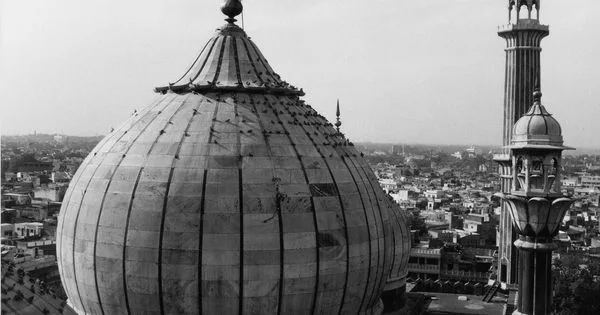
Al-Andalus and Medieval Cities: In cities such as Córdoba or Fez, the main mosque has often served as a template that shaped the development of its immediate surroundings. Córdoba’s Great Mosque was built on an ancient Roman road and integrated into the grid plan without fully replicating it. As a result, the edges of the mosque are slightly skewed relative to the modern street grid. Medieval Muslim architects later built markets (souks) and streets around the mosque, aligning shop fronts or small roads with the mosque’s walls. As stated in UNESCO’s report on Córdoba, the historic center is “a dense and homogeneous urban fabric of medieval origin,” and the geometry of the mosque emerges within this fabric. Streets near the mosque generally run parallel or perpendicular to its qibla wall, thus creating a local grid oriented towards the mosque and superimposed on the older Roman grid. Over the centuries, this has resulted in the fascinating irregular street patterns we see today – a direct physical palimpsest of the qibla wall’s influence. As mentioned earlier, different mosques in Cairo had different qibla walls, so when moving from one neighborhood to another, you can see the direction of the streets shift slightly depending on which mosque dominates that neighborhood’s layout. In the 15th century, Al-Maqrizi noted that Cairo’s neighborhoods had an “irregular settlement pattern” due to the different orientations of the major mosques. On historical maps of Cairo, clusters of parallel streets are visible, each oriented at different angles. These angles correspond to the qibla directions of nearby mosques (for example, the area around the Ibn Tulun Mosque is aligned at 141°). This fractal-like pattern presents the city as a structure composed of a mosaic of sacred directions.
Marketplaces and weekly rhythms: Mosques, especially the main mosque, play a powerful temporal and social role. Every Friday at noon, they host large numbers of people for the Friday prayer. In many cities, this has led to the development of markets and public facilities around the mosque. For example, Istanbul’s Grand Bazaar is historically located adjacent to the Beyazid (Old Mosque) complex; in Isfahan, the Maidan (central square) and bazaar are directly connected to the Shah Mosque. The direction of the qibla can indirectly determine the layout of these markets – typically, the market extends perpendicular to the mosque and progresses from the city gate towards the mosque courtyard, directing people along a path facing the qibla wall. In some traditional cities, small streets are deliberately laid out so that a Muslim walking towards the main mosque on Friday will generally face the qibla as they approach – a subtle psychological cue reinforcing devotion. Sonda Taj’s analysis shows that this “mismatch of secular and sacred grids” is not a flaw, but a tool that allows city dwellers to gradually reorient themselves as they approach the mosque. Essentially, the winding street or rotated square in front of the mosque acts as an antechamber, turning people toward Mecca before they enter the prayer hall.
Skyline and Visual Axis: The position of minarets generally indicates the direction of the qibla for a wide area of the city. In Ottoman mosques, two or four minarets are usually placed symmetrically on either side of the prayer hall, so that the qibla axis can be seen extending between the minarets from a distance. In some cases, a single minaret is deliberately shifted to indicate the direction: For example, in some Central Asian mosques, the minaret is located at the north corner of the courtyard, so that from the main entrance, the minaret visually “points” to the prayer hall behind it. In Islamic cities, sightlines are also organized: there is usually a visual corridor from the city’s main gate or central boulevard towards the dome or minarets of the mosque, so that while walking around the city, the eyes are drawn to this structure and thus to its axis. In the famous example of Isfahan’s Naqsh-e Jahan Square (17th century), the Royal Mosque (Imam Mosque) is rotated approximately 45° from the square’s orientation to face Mecca. This was a bold move—the facade of the mosque intersects the square at an angle, creating a picturesque shift that would otherwise be absent in a flat square. Legend has it that Shah Abbas wanted the mosque to face Mecca, but he also wanted the square to be aligned with the palaces; therefore, he accepted this contrast. Result: Standing in the square, the mosque’s iwan (portal) is three-quarters visible, emphasizing its depth and the direction of its axis (you can almost feel it turning toward a point beyond the square – that point is Mecca). This solution is praised as an example of integrating the sacred axis harmoniously into the urban space.
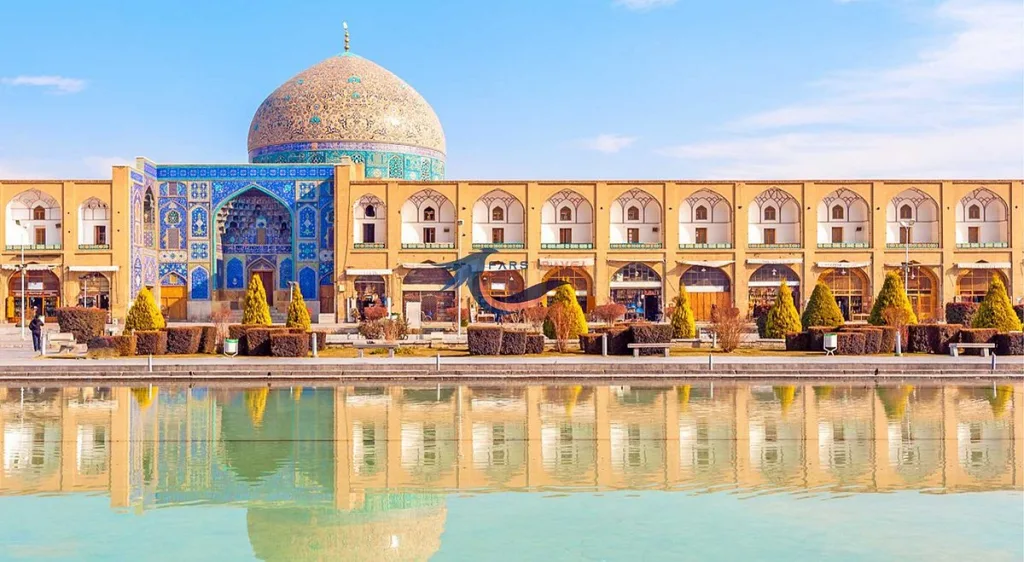
Restructuring Tensions in Colonial Networks: Moving to Latin America or other colonial territories where cities were typically built on rigid grids (e.g., the checkerboard plan of the Spanish Indies Act). When Muslim communities build mosques in such cities (e.g., the Granada Mosque in Spain, located in a modern neighborhood, or a mosque planned for a city center in the US), they face a choice: conform to the grid to facilitate construction, or rotate? Many prefer to rotate within the plot if possible, which results in interesting building footprints. The King Fahd Mosque in Los Angeles (1998) is located within a suburban grid but is rotated approximately 33° from the grid to face Mecca. The parking lot and landscaping absorb this curvature, creating triangular-shaped areas. The King Fahd Islamic Center in Buenos Aires (2000) happens to have a large park-like area, allowing the mosque and minaret to face Mecca without imposing on neighboring buildings. Its approximate northeast orientation is not aligned with the city’s roughly north-south axis of streets, so the complex appears as a separate “island” of Islamic geometry floating within the urban fabric. Interestingly, local urban planners have appreciated this, as it creates a unique symbol and breaks the monotony of the grid pattern. However, not all initiatives proceed smoothly—public life can intervene. In some European cities, planning authorities have demanded that mosque facades align with street facades for aesthetic integrity and have mandated changes to interior spaces for the qibla direction. This situation can lead to clever interior planning: one might enter a lobby from the street, then the prayer hall could be shaped like a rotated box inside, and sometimes triangular foyers or storage areas might form in the corners.
Daily Movement and Ritual Flows: The qibla axis also subtly determines how people use the area around the mosque on a daily basis. In traditional Muslim cities, fountains or wells aligned on the axis are often seen in front of mosques, because ablution (wudu) should be performed facing the qibla direction or as close to it as possible. Thus, public fountains have become social centers along the way to the mosque. Markets also have a weekly cycle: on Fridays, stalls close at prayer time and the crowd flows in one direction, namely towards the mosque and thus the qibla. After prayer, the flow reverses and the crowd usually disperses to the markets and trade begins. In some cities, there were even open areas (eidgahs) outside the city walls for annual holiday prayers; these were large open-air spaces facing the qibla; after prayer, fairs and markets were set up around them.
Indicating the qibla on the horizon line: Beyond the floor plan, the presence of the qibla can also shape vertical elements. A classic example of this is minaret placement. In Ottoman practice, a pair of minarets surrounding the qibla side of the courtyard are taller than the minarets at the front, symbolically emphasizing the direction of prayer. In South Asia, the largest dome on the three-domed facade of Babur-style mosques is located in the center (above the mihrab) and is easily visible even from the outside, making it instinctively clear “which way” the mosque faces. In modern cityscapes such as Istanbul, numerous mosque silhouettes are visible on hills, and all of their domes and half-domes face Mecca (southeast). If you map these directions, a network of sacred directions traversing the city emerges. In some cases, tall buildings or urban design rules have been influenced by the presence of mosques. For example, by preserving a view corridor from the main boulevard to the facade of a historic mosque, the mosque’s orientation (and thus the community it belongs to) remains visually integrated with urban life.
Essentially, the qibla axis serves as an invisible regulator in cities: it aligns social institutions, directs traffic, and stabilizes silhouettes. It sometimes complements the secular urban order, and sometimes competes with it, bringing a kind of sacred order. The result is often a richer urban fabric. As one researcher poetically put it, each mosque is like a “piece of a circle with the Kaaba at its center,” and when drawn in the city, these pieces direct the flow of urban life toward its distant center. The fabric of Islamic cities can thus be read as a collection of vectors converging (when extended) on Mecca—a profound example of faith made physical.
5. Portable, Vertical, and Shared: How Is the Qibla Coded in Contemporary, Hybrid, or Multi-Faith Spaces?
Beyond the Mosque – Indicating the Qibla Everywhere: In today’s world, Muslims pray not only in places specifically built for mosques, but also in countless other locations such as airports, universities, offices, hospitals, and multi-faith prayer rooms. In this context, indicating the direction of the qibla clearly but unobtrusively often poses a challenge in secular or shared environments. The sacred axis must be indicated through materials, symbols, or technology without dominating the space that serves different users. In design language, various elements are used, ranging from subtle arrows and niches to portable compasses and smartphone applications. While religious practices adapt to modern life, the direction of the qibla remains an indisputable element. Therefore, designers have developed creative solutions to “code” this direction in every space, no matter how temporary or neutral it may be.
Direction finding and clues: When you enter a “multi-faith prayer room” at a university or airport, how do you know which direction to face towards Mecca? Generally, a series of subtle clues are used. Usually, a qibla label or plaque is found on a wall or ceiling. For example, in hotels, the standard practice is to affix a small sticker with an arrow labeled “Qibla” to the ceiling or inside a drawer. In multi-faith rooms, design guidelines recommend clearly indicating the main directions (especially east and the direction of Mecca) without overcrowding the space. This can be done with a compass rose embedded in the floor or a stylized arrow on the wall. In some prayer rooms, patterned rugs with lines or geometric motifs pointing towards the qibla are used, so that Muslims can intuitively determine their direction when laying out their prayer mat. Lighting can also be another clue: a thin beam of light or a brighter wall applique on the qibla wall can psychologically draw a person towards that direction. In spaces designed primarily for Muslims (e.g., office prayer rooms), decorative elements such as framed calligraphy or abstract designs may be visible right in the center of the qibla wall. It is important that such indicators are usually labeled or sufficiently obvious, because unlike in mosques (where the direction is clearly indicated architecturally), general-purpose rooms offer no clues. Multifaith design literature explicitly recommends the use of signs for the qibla: “Different signs are suggested… these could include: PRAYER ROOM, MULTIFFAITH ROOM, QIBLA.”. The WuduMate guide (for the design of worship facilities) states that if the room is not built facing Mecca, “there should be a sign indicating which direction each wall faces – especially east and the direction of Mecca” and mentions that a compass or ceiling arrow is a practical method. They even sell small qibla direction arrow panels. Such elements must be done with finesse: if too large or obvious, they may disturb non-Muslims using the room; if too discreet, Muslims may not see them. The goal is the respectful layering of cues.
Portable Qibla Indicators: In many temporary situations, Muslims carry their direction indicators with them. For example, small travel prayer mats often come with a compass (as seen in the image above) – this compass is placed on the mat, not in the room. The mat is unfolded, aligned correctly with the ground using the compass, and prayers are performed on it. This is a personal solution that eliminates the need to change location. Another device is the smartphone Qibla app that uses GPS; the user can quickly find north and then the direction of Mecca (usually an arrow is placed over the camera image). These digital aids enable Muslims to effectively “determine the qibla” wherever they go; this is a profound democratization of the sacred orientation. Some buildings also feature electronic qibla finders: for example, some hotel lobbies in the Middle East have digital panels displaying an arrow pointing toward the Kaaba (sometimes updated in real time when the Earth’s magnetic field shifts).
Architecturally, some modular prayer areas include portable indicators: a foldable screen or a cabinet that opens to reveal a niche resembling a mihrab. The multi-faith room guide mentions “cabinets that look like bookshelves but, when opened, reveal different designs… one is a mini mosque with appropriate lighting.” Imagine a cabinet that looks neutral when closed, but when opened by a Muslim user, it contains a qibla wall design, perhaps a small mihrab-shaped cutout, and a compass. This type of modular kit approach allows a room to serve multiple religions in sequence—there is nothing permanent on the walls, but there are tools to create a temporary qibla. Some workplaces have roll-up carpets with qibla lines: stored in a closet, these carpets create a prayer area aligned with Mecca when rolled out in a conference room (one end of the carpet has a pattern or label saying “place this end towards Mecca”). Here, we see echoes of early Muslim practices of using whatever was at hand to determine direction (even drawing lines in the sand), now in high-tech or design-focused forms.
Vertical Challenges – Multi-Story Worship Halls: In dense urban environments, mosques or worship halls may be spread across multiple floors or located on the upper floors of tall buildings. This situation raises structural and planning issues: A building’s columns and beams are usually placed according to a single grid pattern (often aligned with the street/grid), but the prayer hall can be rotated internally. A famous example of this is the New York Islamic Cultural Center: this structure is essentially a large cube rotated within a larger complex. The architects (SOM) placed the mosque on the cube’s second floor and used four diagonal beams to transfer the roof load to the orthogonal building frame via the rotated dome. This provided a column-free interior space while keeping the exterior facade compliant with Manhattan’s rectangular street wall zoning plan. In many small mosques built onto existing buildings, the solution is less elegant: columns may protrude at awkward angles relative to the prayer rows, requiring some columns to be removed (if possible) or worshippers to sit creatively around them. Some innovative designs use separate-level halls: for example, a women’s prayer balcony placed at a 90° angle to the men’s hall, both facing the same mihrab but offset from each other on the plan. In skyscrapers, the direction of the elevators is another consideration; when exiting the elevator lobby parallel to the building, the prayer room on that floor may appear curved—designers often compensate for this turn with a small corridor or vestibule so the odd angle is not noticeable upon entry. There are also ideas of creating vertically stacked prayer areas by slightly rotating each floor towards the qibla (this is not common and largely conceptual). More frequently, the prayer area on each floor is aligned with the main prayer area and the prayer areas above/below it, creating a multi-level hall. For example, the East London Mosque has a large ground floor hall and a women’s balcony above it; both face the qibla, which in London is approximately 118° ESE. However, the building’s street facade is approximately 90°. Thus, the prayer hall inside is polygonal, while the exterior is situated on a rectangular plot. This issue was resolved by creating an entrance courtyard that is not used for worship and eliminates the angle difference.
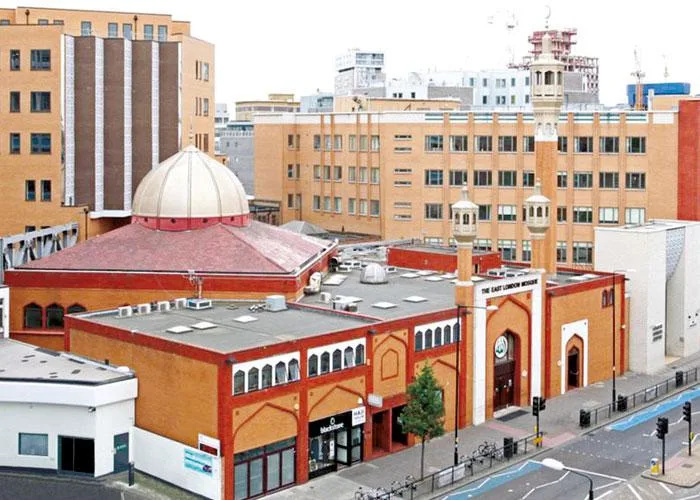
Secular Rules and Subtle Design: In countries where Muslims are not in the majority, any conspicuous religious element can be sensitive. Multifaith rooms, in particular, strive to be inclusive and neutral when not actively used by a specific group. For this reason, architects use reversible or integrated qibla indicators. A line on the carpet may appear to an uninformed observer to be merely a decorative strip, but a Muslim will recognize it as the direction of the qibla. Some corporate prayer rooms (such as those at Google or universities) prefer neutral decor, but may paint the qibla wall a different color or direct the lighting grid in that direction. To avoid causing discomfort, signs are sometimes stored in a closet. For example, a sign saying “Mecca is this way →” may be found in a cupboard and placed on the floor during prayer times, then removed afterwards. Policy and Inclusion also play a role: Some institutions provide separate prayer areas specifically for Muslims, where a full mihrab niche can be built. Others set aside a corner of a multi-faith space for Muslims, placing prayer mats or copies of the Quran there (arranged to indicate the direction of the qibla).
Transportation and Public Facilities: Today, many airports have mosques or prayer rooms. For example, Istanbul’s new airport has 44 private mosques/prayer rooms (separated by gender) and 3 multi-faith prayer rooms. The separate ones are arranged to face the qibla and are essentially small mosques. However, multi-faith prayer rooms probably only have a qibla indicator for Muslims and a removable cross, etc., for Christians. In these temporary spaces, users may be in a hurry or unfamiliar with the room, so clear signs are very important. Typically, there is a sign on the wall that says “Qibla” in a way that everyone can understand, accompanied by an arrow. Even airlines have taken action on this issue: on some in-flight entertainment systems during long-haul flights, there is a “Mecca indicator” that shows the qibla according to the direction of the aircraft. This shows how widespread this concept has become: a religious person should not have to struggle to find it; technology or design should help them.
Modern Mosque Design: When designing for Western communities or unusual locations, contemporary architects sometimes prepare an “Islamic kit”. This kit may include: a demountable mihrab (which could be an artistic panel or arch that can be bolted to the wall), a qibla indicator, stackable prayer mats with alignment lines, and, if necessary, a curtain partition for gender separation. These elements can be set up in any rented room or hall when prayer time comes and then removed afterward. The result is a portable mosque that exists during specific time periods. For example, Muslim students at a European university can turn a classroom into a Friday prayer hall by laying out carpets at noon, affixing arrow markings to them, and placing a symbolic mihrab made from an independent frame. Here, the qibla is encoded not in the building but in objects.
Design for flexibility: As multi-faith spaces become more common, there is growing interest in design details that honor everyone without conflict. Privacy and cleanliness are important for Muslims: ideally, prayer is performed in a clean area where shoes are not worn. Therefore, some multi-faith rooms feature a carpeted sub-area (often designated for Muslims) where shoes are prohibited, and hard flooring in other areas. The carpeted area is typically oriented towards the qibla. Such arrangements are not formally published but exist according to anecdotal evidence. Significantly, secular institutions have also adapted restrooms to accommodate Muslim needs (e.g., wudu faucets, the restroom not facing the qibla out of courtesy—some design guidelines include the statement, “When installing restrooms, remember that Muslims should not face Mecca when using the restroom”). This demonstrates how deeply the concept of the sacred direction permeates even unexpected design decisions in public spaces.
Meaning and Memory: Even in these hybrid spaces, the act of turning toward the qibla connects the individual to the global Muslim community. When they find that arrow or niche, they feel a sense of psychological comfort—the assurance that this space also accepts the direction of prayer. Designers note that adding a qibla indicator to a multi-faith room can make Muslim users feel not just accommodated, but truly welcomed. On the other hand, care must be taken to ensure that the space does not appear overly Islamic to others. Therefore, the best solutions are often smart design solutions: integrated, subtle, and customizable by the user.
The design of traditional mosques facing the qibla direction demonstrates universality. Whether in a large airport hall or a small office room converted for prayer, believers have found ways to orient their bodies and souls toward the Kaaba. Modern design and gadgets have made this easier, but at its core, this is the same impulse that led the first Muslims to carry their prayer rugs with them to find the right direction in foreign lands. The sacred axis persists as portable and unchanging, even as the physical environment changes.




